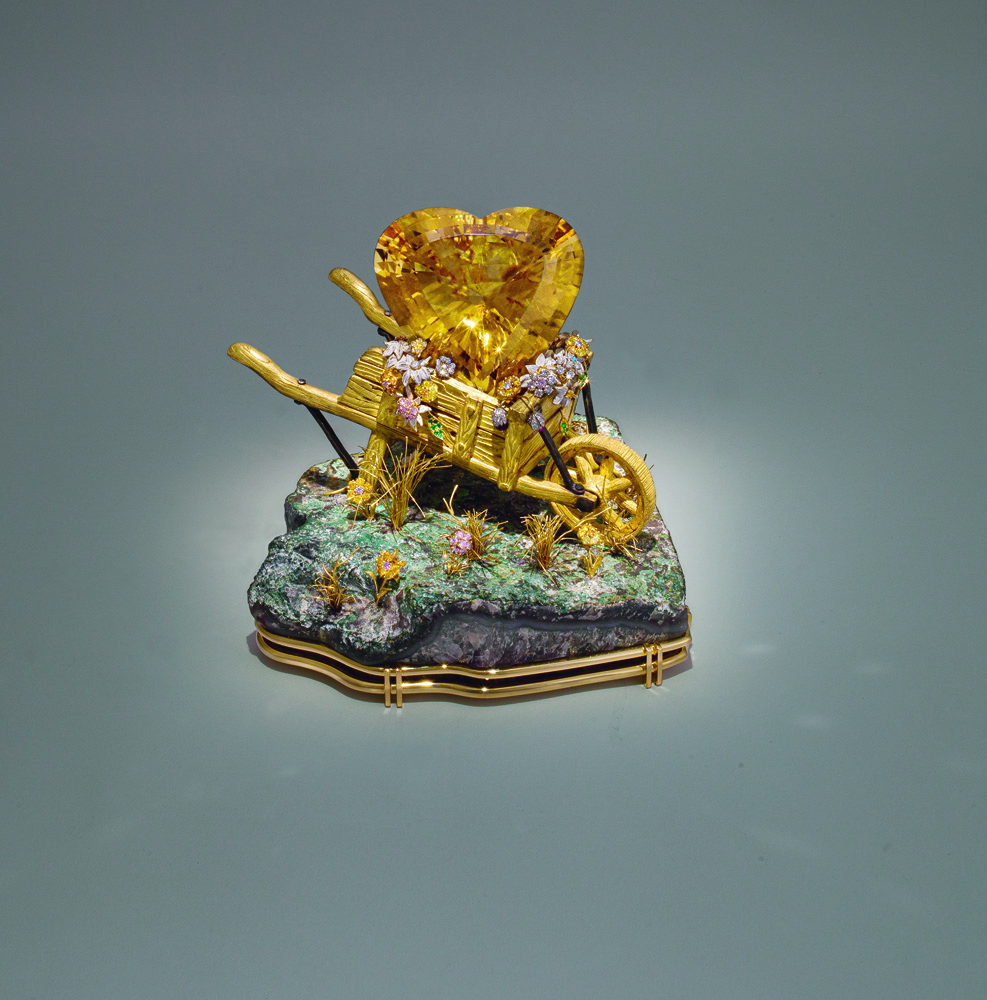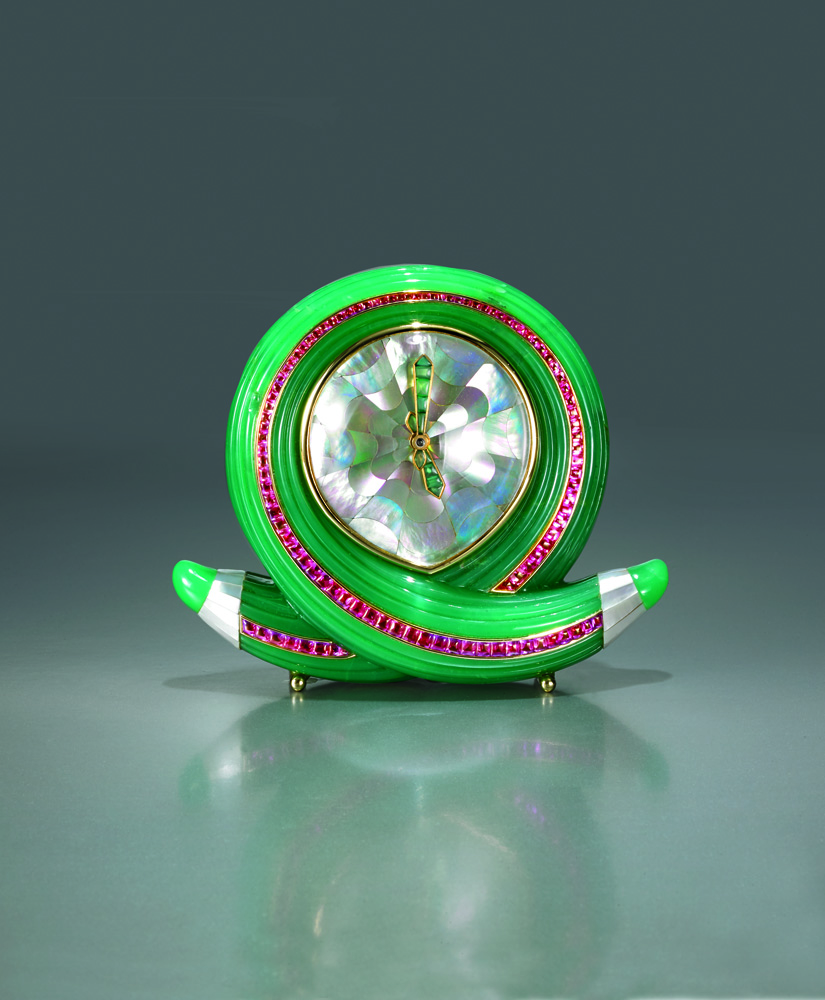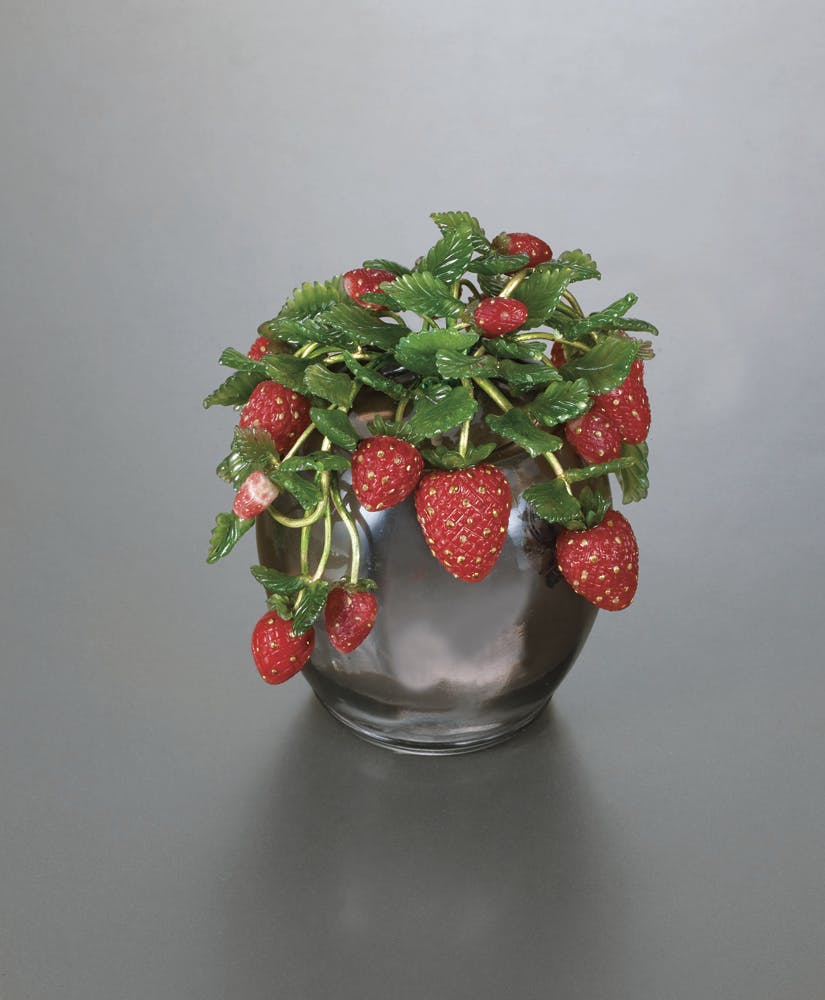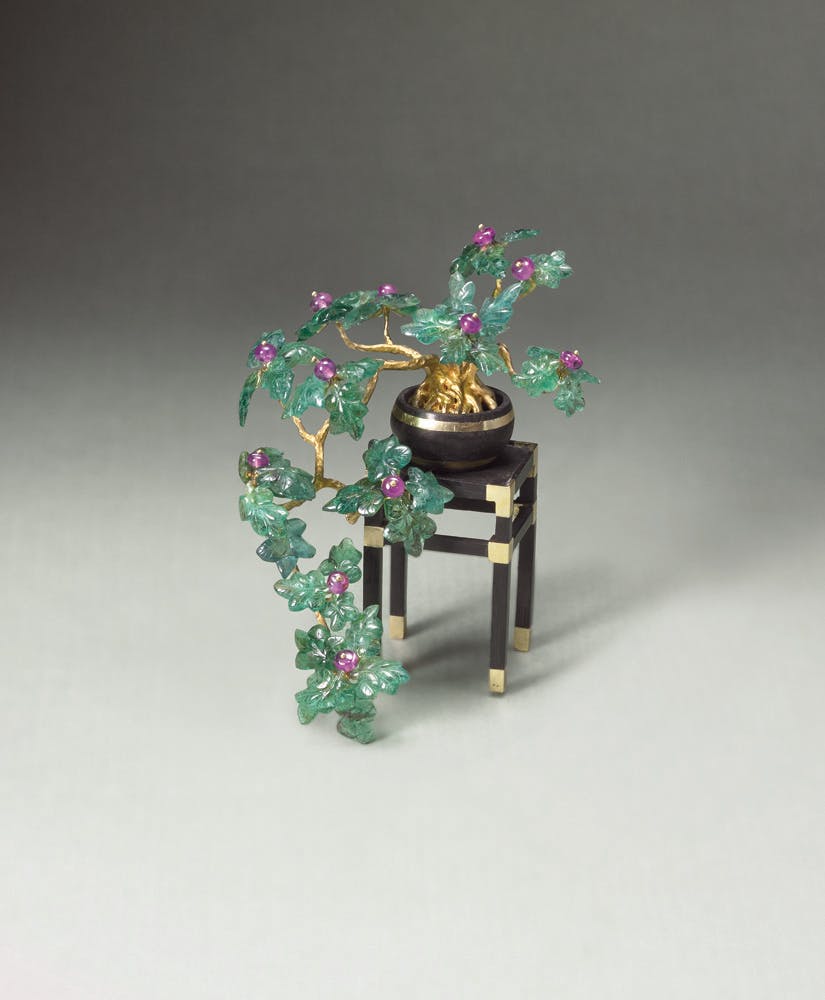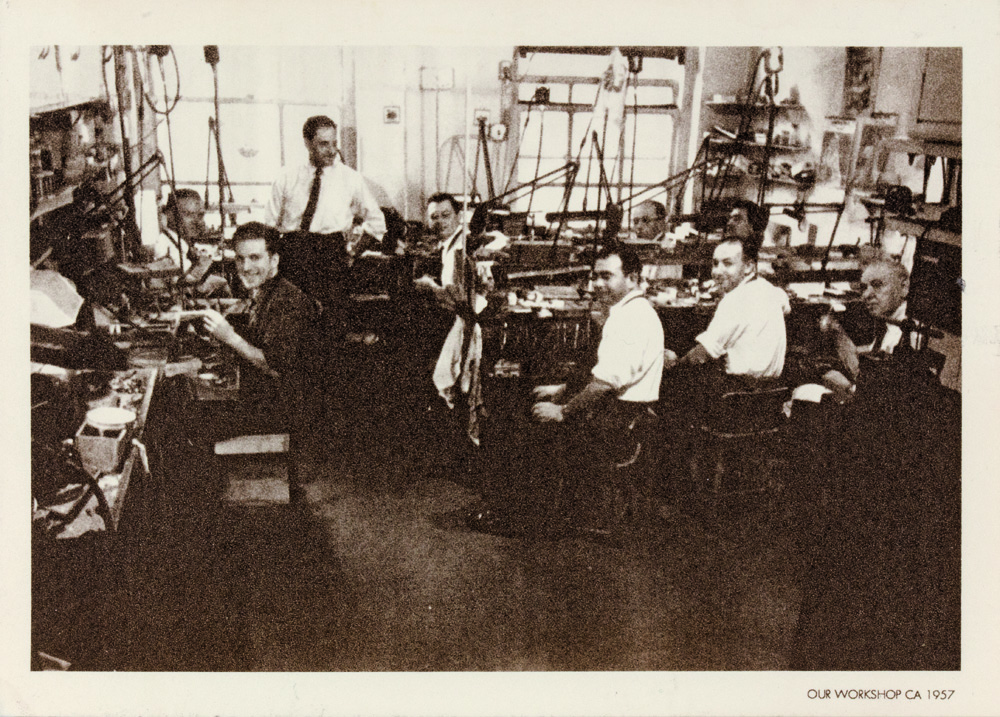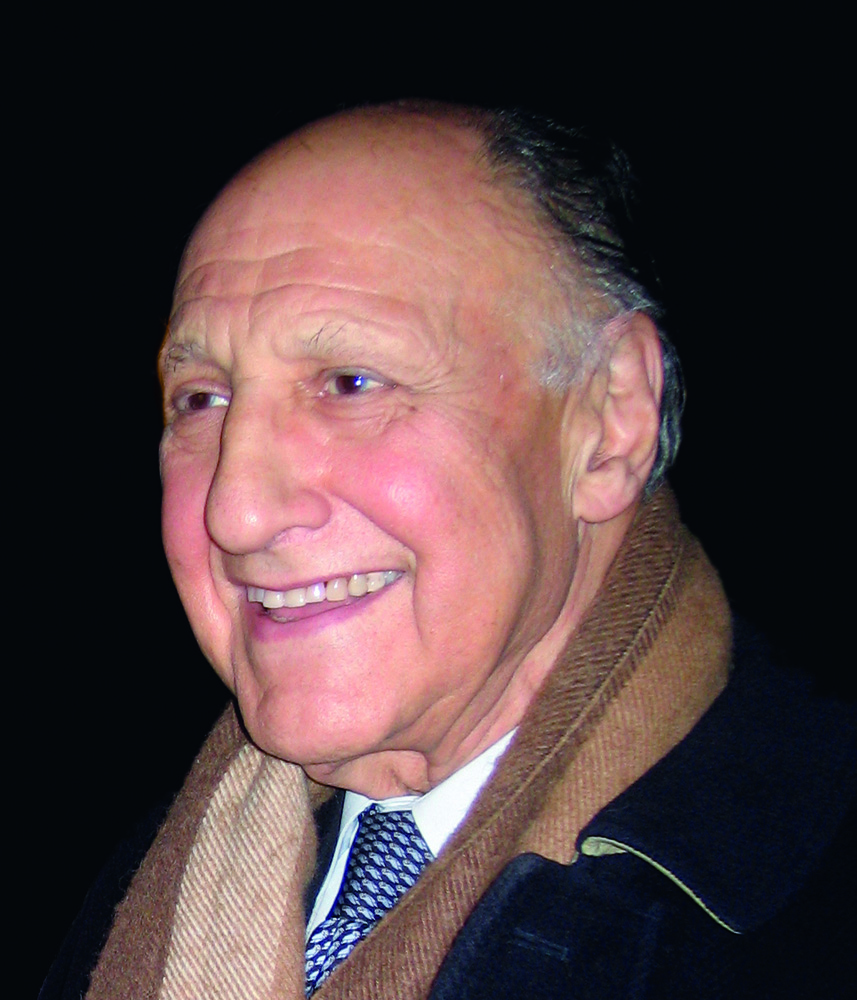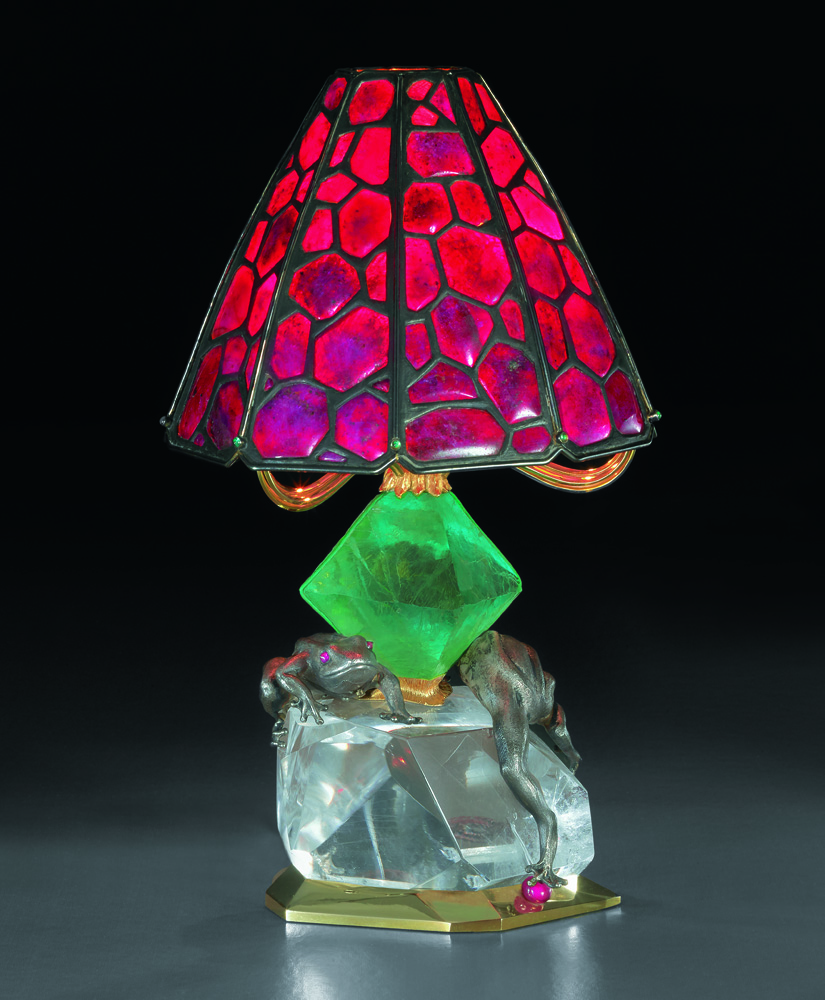
I did not know anything about French jeweler André Chervin (b. 1927), nor about his New York City atelier Carvin French, before entering the exhibition Enchanting Imagination: The Objets d’Art of André Chervin and Carvin French Jewelers at the New York Historical Society. For over six decades, Carvin French has become one of the most esteemed creators of handcrafted fine jewelry in the world, yet, the atelier has provided mostly private-label, commissioned works and most of his pieces were created for the jewelry houses of Cartier, Tiffany, Van Cleef & Arpels, and Verdura.
The exhibition, which presents handful jewelry and mostly objets d’art, comes to expose the work of André Chervin and his artistry and not what he has done for other jewelry houses. The work is exquisite — lamps, clocks, figurines, boxes, personal accessories – made in gold with rubies, diamonds, and sapphires, jadeite jade, lapis lazuli, amethyst, and rock crystal quartz. These tiny masterpieces reminding me of the precious miniature crafted for Europe’s royal houses during the 17th and 18th centuries. ‘This collection represents a lifetime of work, André Chervin illuminates, ‘with these objets d’art, I was able to choose myself what to make, and when, and exactly how I wanted them. I was free from the constraints that naturally come when you are manufacturing for a customer’s order. These are my own expressions. These are my art, pure and simple. These are my true freedom.’
The story of Carvin French is fascinating. It is the story of two Frenchmen, who built a distinctly American business in New York City. André Chervin was born in Paris in 1927 to a secular Jewish family with a history of working in the jewelry trade. The German invasion in the Second World War forced the family to flee for the south of France. After the war, Chervin enrolled at the Haute École de Joaillerie (est. 1867), the foremost jewelry school in France. While there, he trained in the required sequence of bench-work (filing, sawing, soldering, following design specifications), gold- and silversmithing, gem-cutting, and enameling. When Chervin emigrated to New York in 1951, he found that as a French-trained jeweler, he was in immediate demand and within several months was working for the esteemed jeweler, Louis Féron. While there, he met Serge Carponcy, a baguiste, or specialist in making rings, who became his partner in 1954 when the two opened Carvin French Jewelers with the combined funds of $2000.
The objects presented in the show are wonderful, but the labels lack. I wanted to see at least the dates of these objects, to place them in context.
